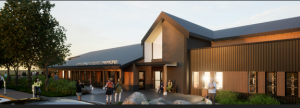Construction employers are commending WorkSafeBC and the province for walking a tightrope and coming up with regulatory changes that protect religious freedoms while ensuring worksites remain safe.
“Construction sectors across this country are no stranger to policy and regulations and legislation that often goes against the grain or somehow doesn’t make sense,” Council of Construction Associations (COCA) president Dave Baspaly told the Journal of Commerce in an interview. “This situation could have gone that way, but this was actually planned out reasonably and we can work with it.”
Labour Minister Harry Bains had asked WorkSafeBC to consider changes to B.C.’s Occupational Health and Safety Regulation (OHSR) on safety headgear. Under the regulation, safety headgear must be worn by a worker in any work area where there is a danger of head injury from falling, flying or thrown objects.
The Sikh community maintained employers were effectively applying the regulation as a blanket requirement, resulting in turban-wearing workers not being able to fully participate in the workforce.
However, Bains announced recently that new hard hat rules will soon make workplaces in B.C. more inclusive for people who wear religious head coverings without compromising workplace safety.
Starting Sept. 1, employers will be required to review each area of a jobsite when determining if a person must wear safety headgear, such as a hard hat, in that area. Employers will determine, through a risk assessment, what safety precautions could be taken to prevent head injuries and whether a hard hat is necessary.
“Creating more inclusive workplaces is a priority for our government, and we have been advocating for a change to the safety headgear regulations for a long time,” Bains said in a statement. “We are building an economy that benefits everyone, which includes ensuring safe workplaces are inclusive to people regardless of their faith.”
Employers in B.C. are legally obligated to ensure the health and safety of their workers as well as accommodate a worker’s religious practice under the B.C. Human Rights Code.
In B.C., the ground rules around workplace safety are laid out in the OHSR.
For many years, the Sikh community has raised concerns about not being able to fully participate in the workforce because of some employers’ approach to the safety headgear requirement.
According to the government, the regulatory change provides more opportunities for employers to safely accommodate workers who wear head coverings, such as a turban, as a religious practice.
Baltej Dhillon, a retired RCMP officer and WorkSafeBC board member, said the change will allow members of the Sikh community who wear a turban to engage in dialogue with their employers to address workplace risks, which can, in turn, eliminate the need for a hard hat in certain scenarios.
“This change supports worker safety and will allow more Sikhs to come to work without having to compromise their religious beliefs.”
Last August, when changes were proposed to the hard hat regulations, the COCA and Vancouver Regional Construction Association argued the idea was not safe nor practical for the industry.
However, Baspaly said the regulation strikes a balance because employers will still have the right to determine via a risk assessment if hard hats must be worn in areas where risks are high, but it allows them leeway to relax the requirements in zones where risk of injury is low, such as around washroom or administrations areas, and make accommodations or use engineering controls to mitigate risks.
“There’s going to have to be a document risk assessment where it says, ‘This is an area that’s particularly problematic, this is an area that’s not,’ and to work with the (Sikh) community to do that,” he said. “So, we look forward to that opportunity to see what we can do in that space across the sector.”
A concern of construction employers – and also the Sikh community – had been that WorkSafeBC was put in a position of choosing either workplace safety or granting religious freedom, said Baspaly, but from an industry perspective allowing a risk assessment is a compromise between the two extremes.
“This stuff could have been a gut-wrench, sort of, ‘We’re going to go this way, we’re going to give everyone a blanket exemption type of thing,’” he said. “But fortunately, we really took the time to do the process properly and came out with this sort of, I would call it a comprise, without sacrificing any religious freedom or safety issue. We’ve come out of it with a way through that is reasonable.”
Baspaly emphasized that employers believe in religious freedoms and appreciate the work done by Sikhs in the construction industry.
“One of the most valuable contributors is the Sikh community. They work across the province. They work in all facets of construction.”
He believes through ongoing dialogue with the Sikh community, safety and religious freedom can co-exist because risk assessments are not foreign to the construction industry.
“We’ve been doing it since time immemorial and most of the big primes do it fluidly on their sites.”











Recent Comments